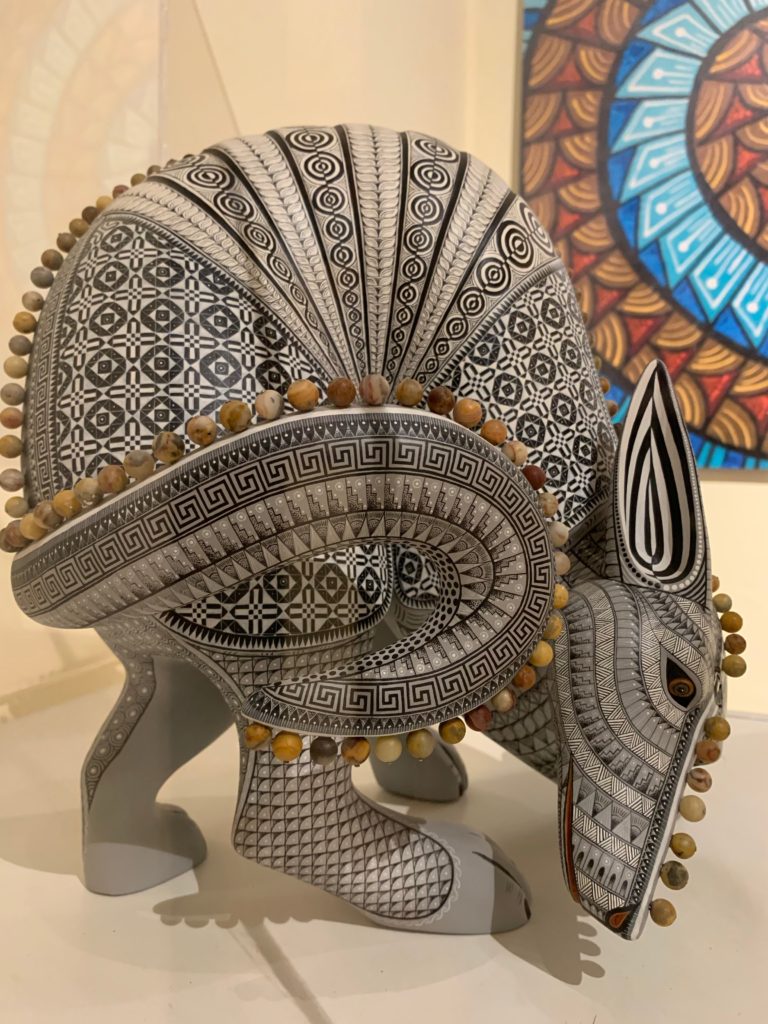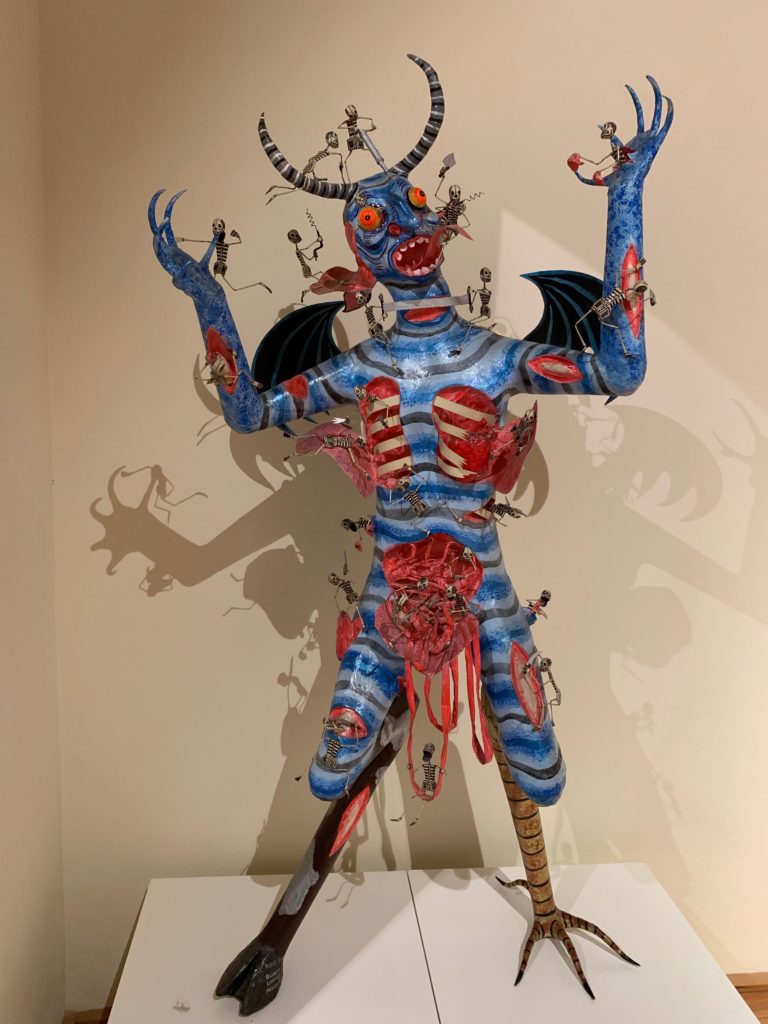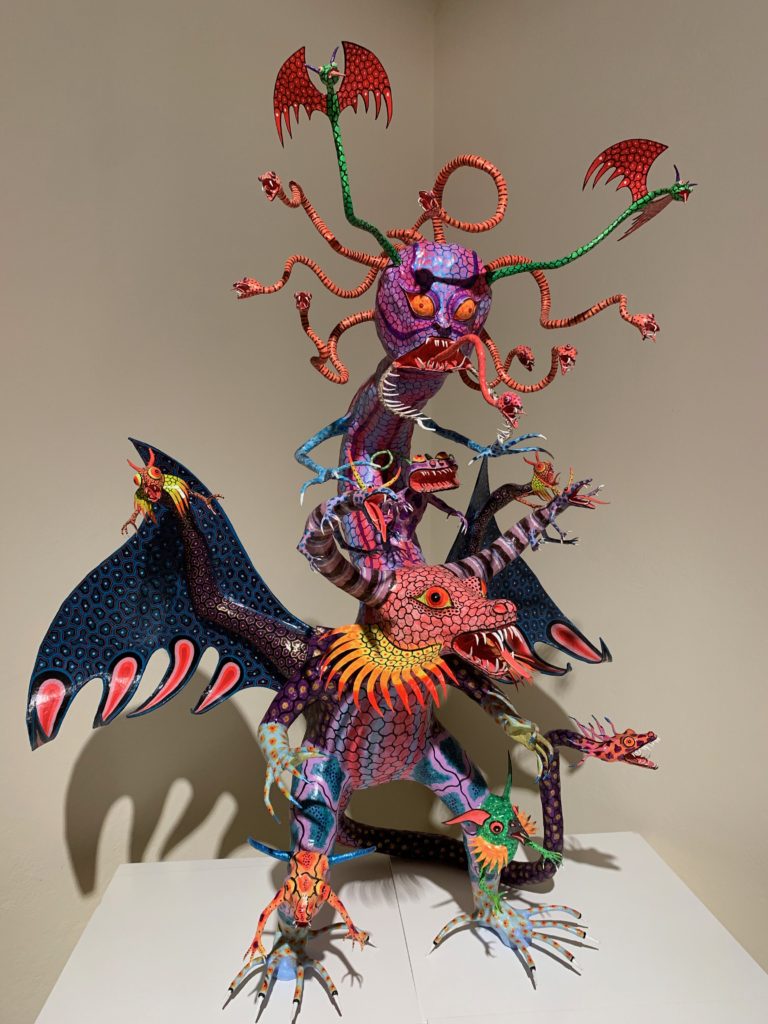After 18 years of teaching in elementary school, I started a new position teaching English in grades 7 and 8 this year. Yikes! It was a little scary at first – these kids are so big … but they’re also funny, articulate, passionate, and eager to connect. I love it. Anyway, it has taken a lot of brain power to figure out my new role, so in the meantime I pushed all my hobbies to the back burner. I haven’t picked up my ukulele in weeks. After immersing myself in Spanish and recommitting to the language in Mexico, I dropped it like a hot potato once I got home. Yoga? No-ga. Meditation? I seriously can’t quiet my mind enough to even try. And blogging? Well, yeah, that’s why I’m here. Time to get back on the horse. (Oh, I also haven’t gone horseback riding in ages.)
So… back to Mexico. In addition to taking classes, exploring with my guides, and attempting to bond with my host family, I also enjoyed a few excursions, some with the group and some on my own.
Museo Hacienda de San Cristóbal Polaxtla
On Thursday afternoons, all students at the Livit Immersion Center headed out of town to check out a nearby attraction. Our first outing brought us to the Museo Hacienda de San Cristóbal Polaxtla. As part of Mexico’s land reform, large privately owned farms were divided up and turned into “ejidos,” government-owned collectives. The hacienda is one of three purchased by Antonio Haghenbeck for the purpose of conservation. The hacienda was in a state of disrepair and ruin, so he began to restore it. He incorporated architectural elements, furnishings, and decorations he collected from other old homes.
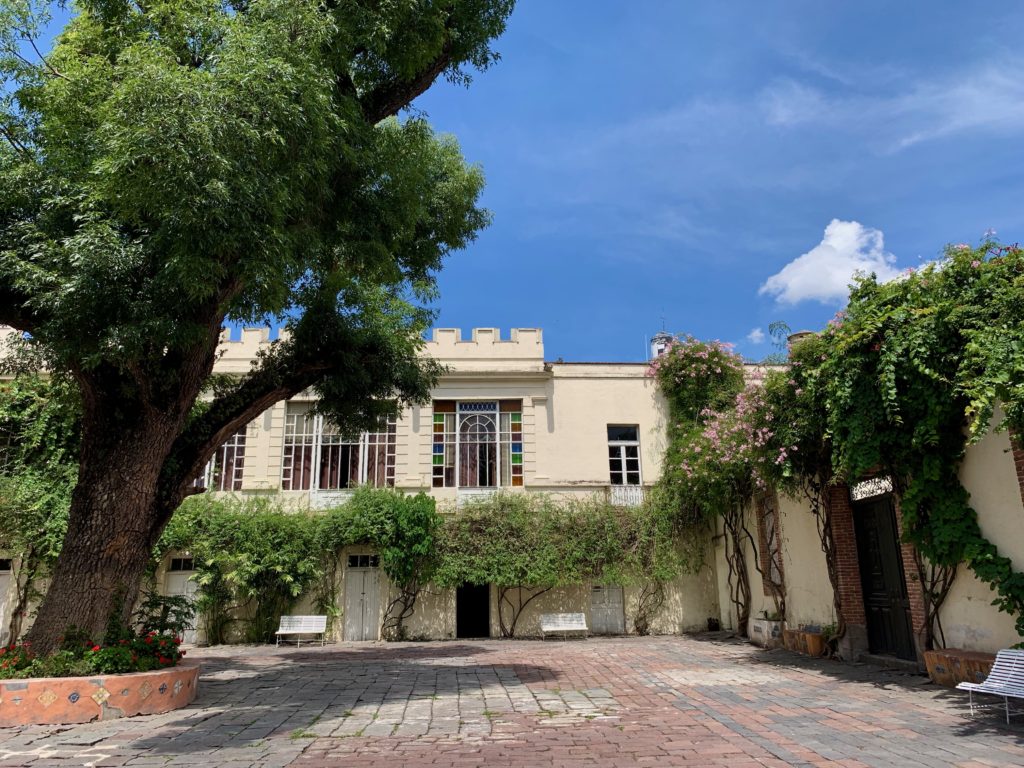
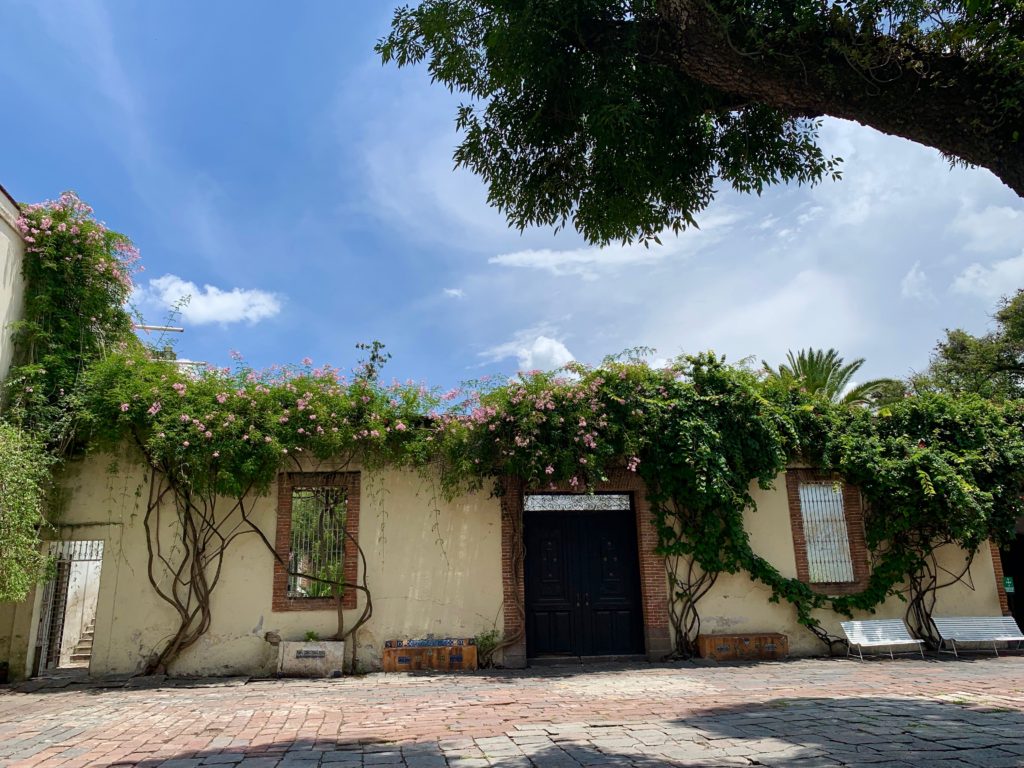
The caretaker led us through many of the rooms, sharing stories (in Spanish) about the ex-hacienda’s interesting history. He said Haghenbeck had three personal values: his Catholic religion, philanthropy, and the prevention of animal cruelty.
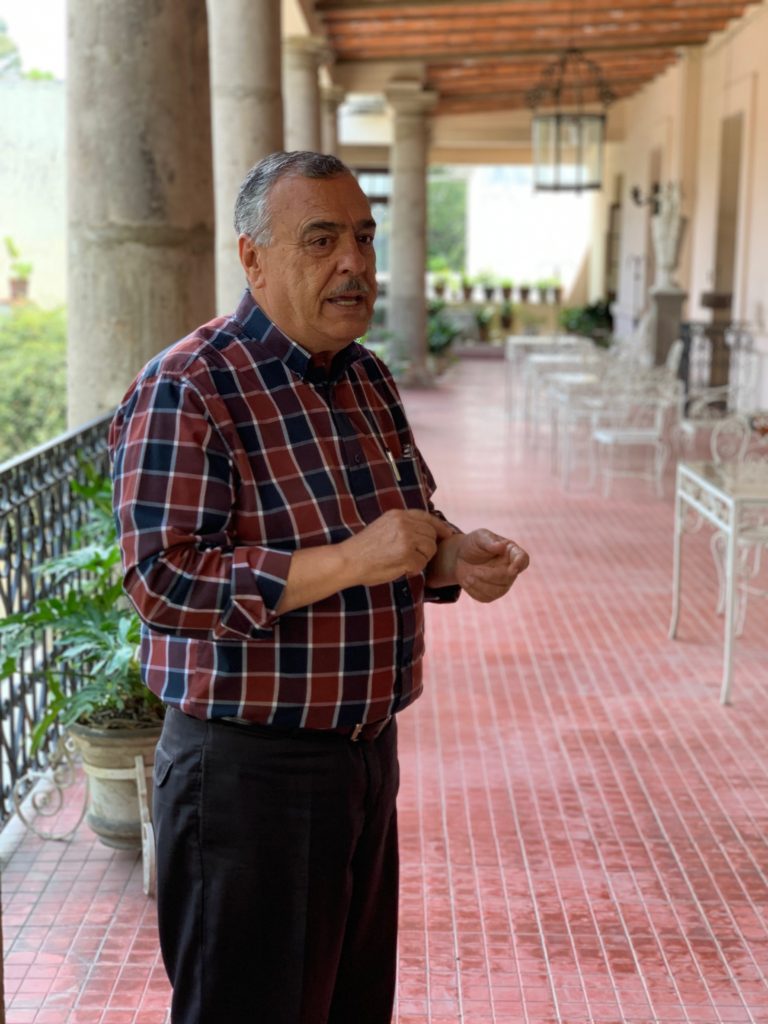
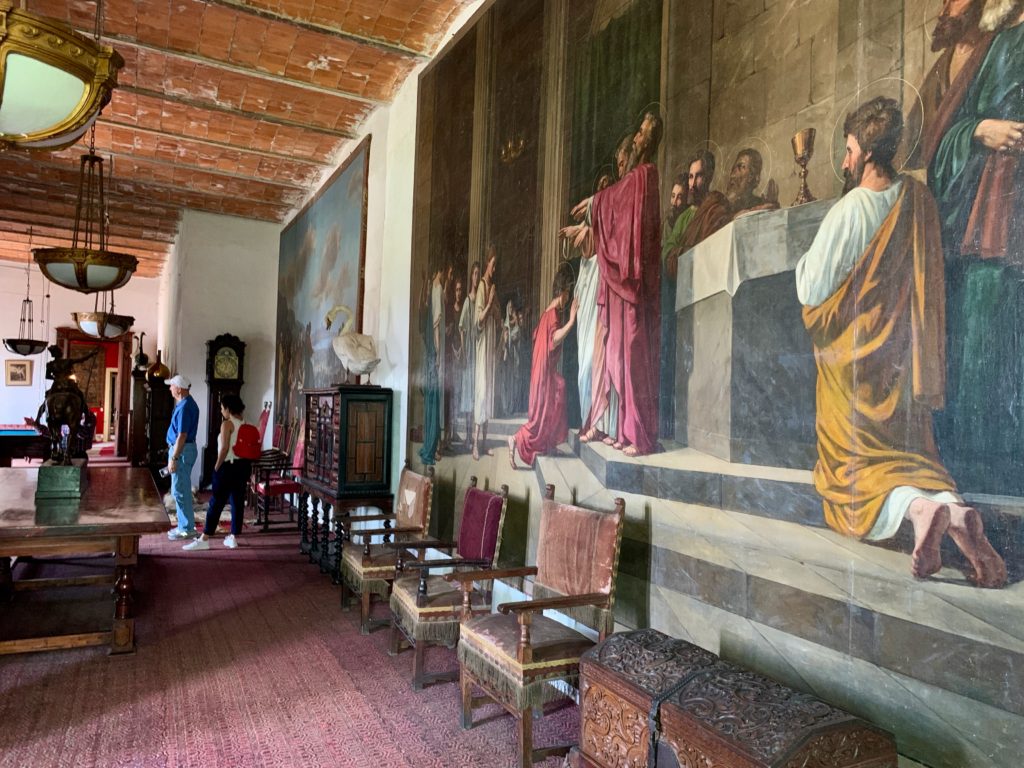
The family’s personal chapel, chock full of paintings depicting scenes from the Bible.
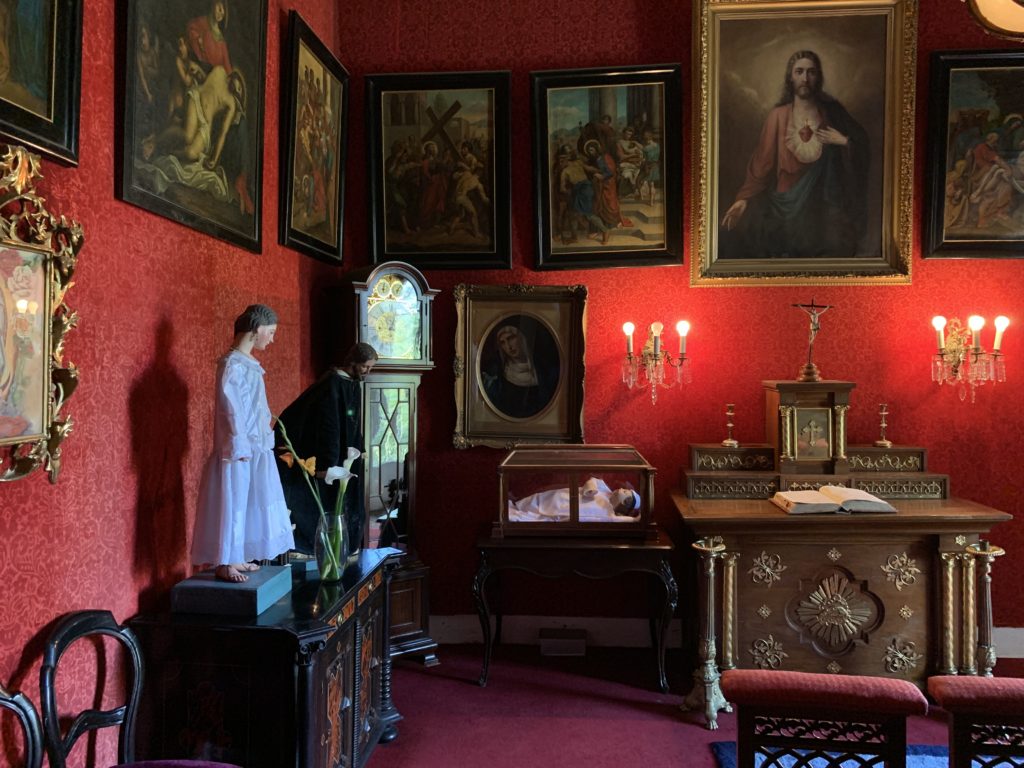
If Haghenbeck was such an animal lover, then why were there dead animals in every room? I asked the guide this question, and he explained that Haghenbeck never killed an animal. He rescued them from zoos and circuses, so these guys just died of old age!
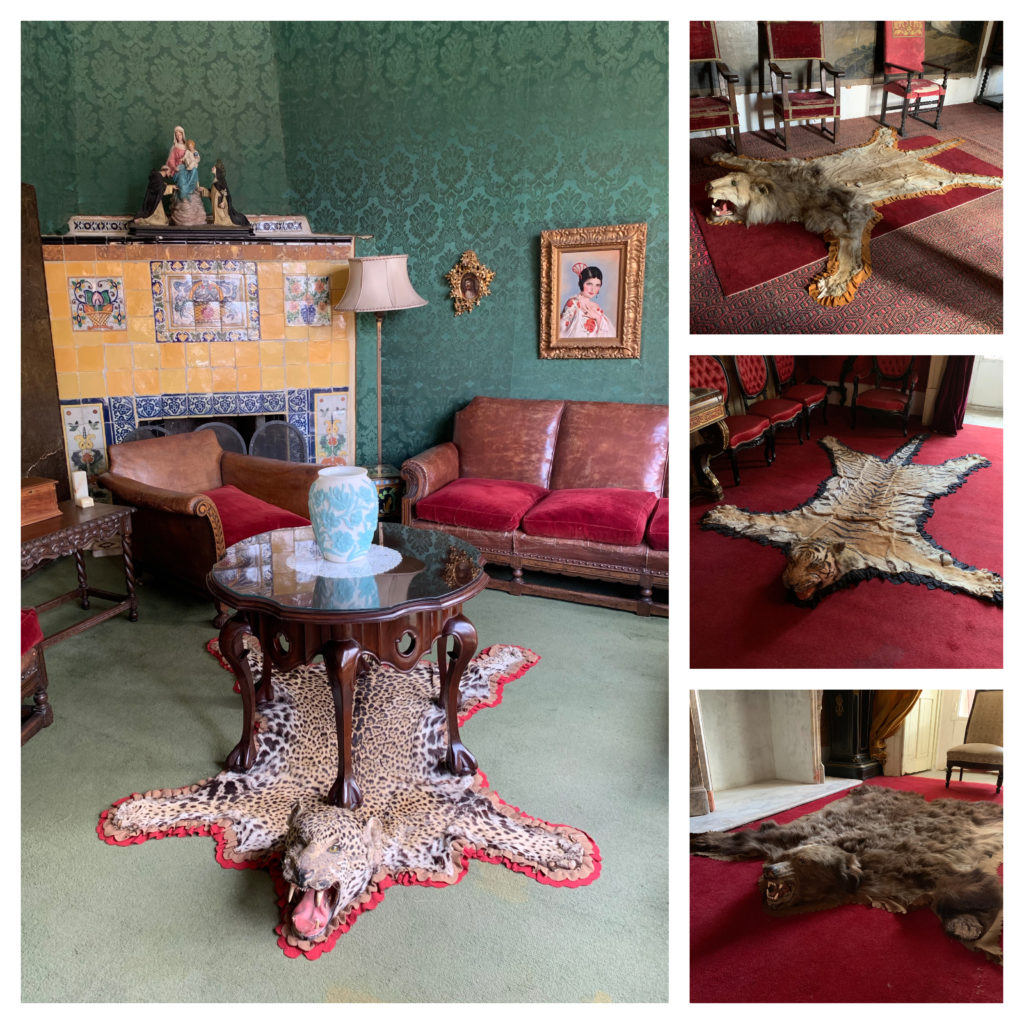
In the 1600s, the hacienda was a key producer of wheat and barley. The old, dilapidated granary still stands.
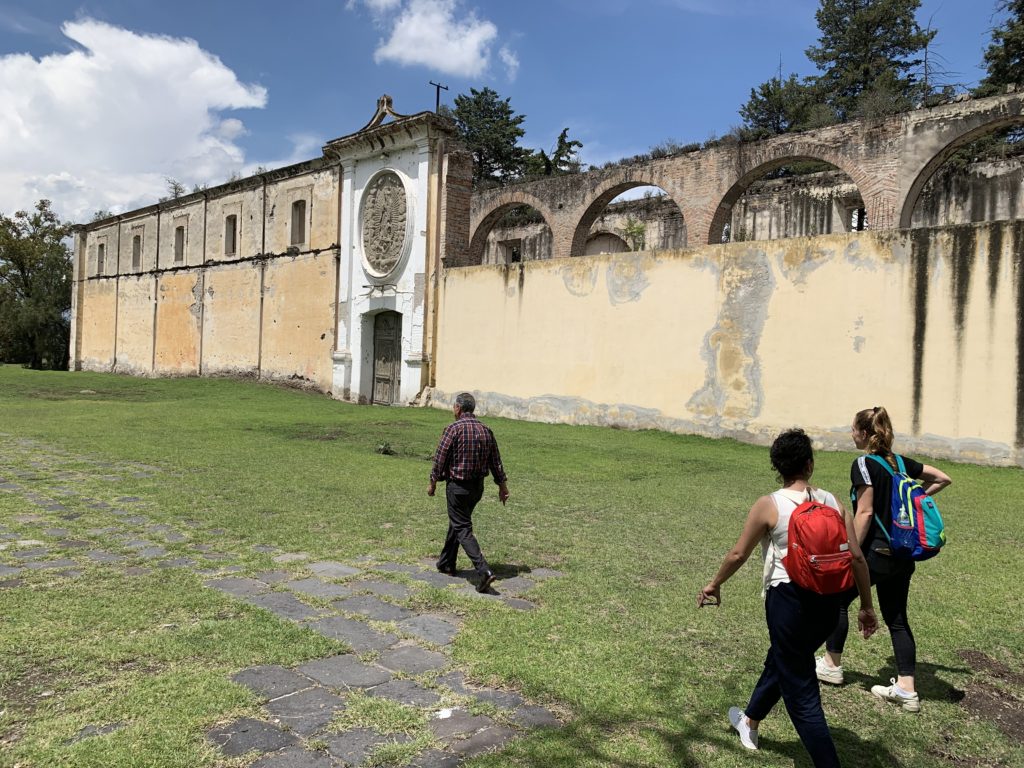
According to the guide, this water once played host to swans and beautiful fish. Peacocks and other exotic animals roamed the property. It’s hard to fathom its former glory. Still, what a weirdly fascinating place.
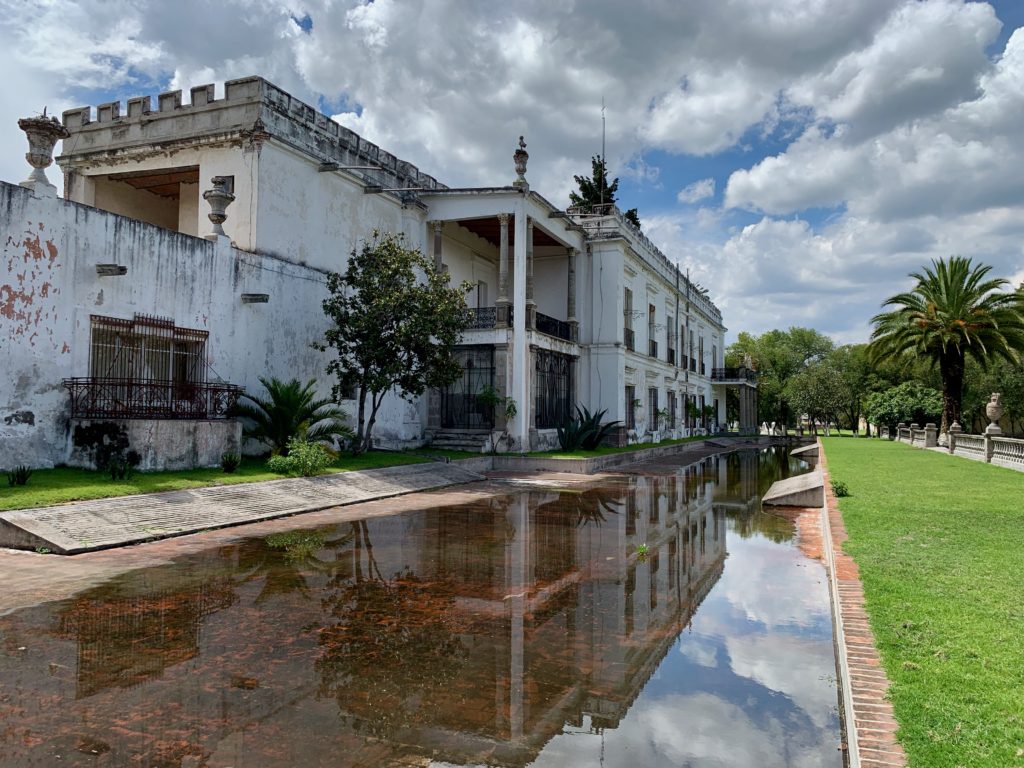
Atlixco
On my second Thursday in Puebla, we all piled into cars and headed about 25 kilometers west to the municipality of Atlixco. The city is best known as a producer of ornamental flowers and trees. However, we drove through town and up the hill a bit to La Granja Piscícola Xouilin, a massive fish farm. Not exactly a tourist hot spot, the farm was nevertheless entertaining. We bought food and tossed it to the writhing, flipping masses of trout. We watched the workers sorting fish into different pools.
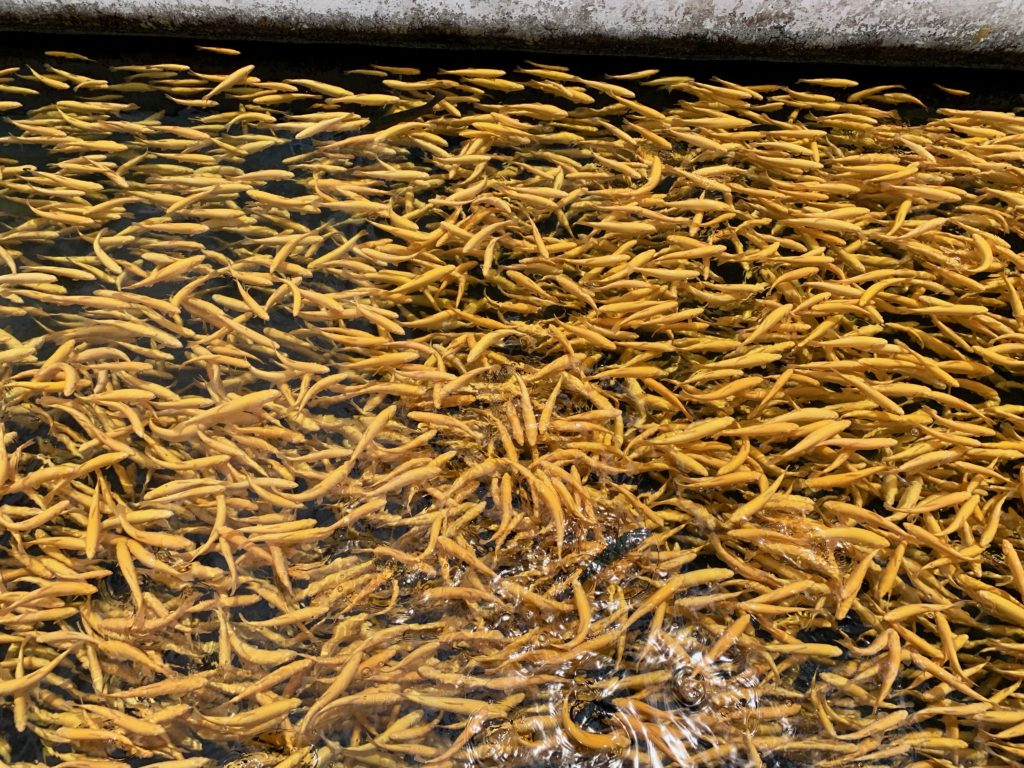
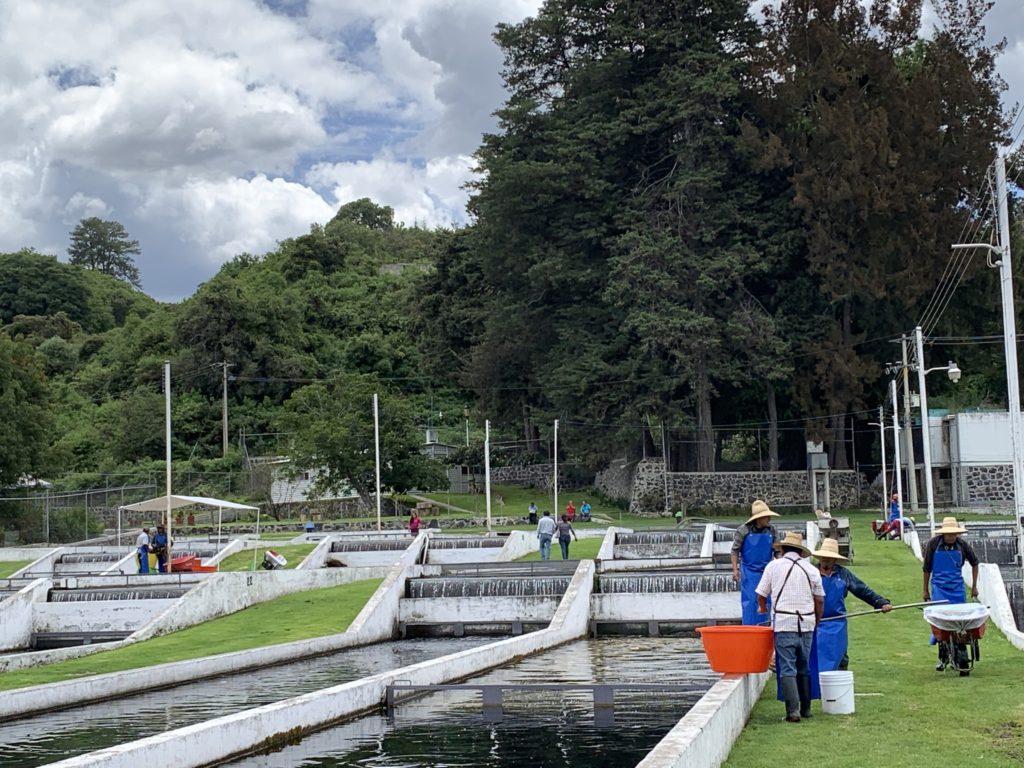
Our next stop was an old textile factory in Metepec that was powered by snow melt from the Iztaccihuatl Volcano, which flowed through the factory’s property and powered huge turbines. Later the building was turned in to a rehabilitation hospital, and now it’s a hotel. There wasn’t much to see, but huge old photographs decorate the public spaces, illustrating what life was like for workers in the factory.
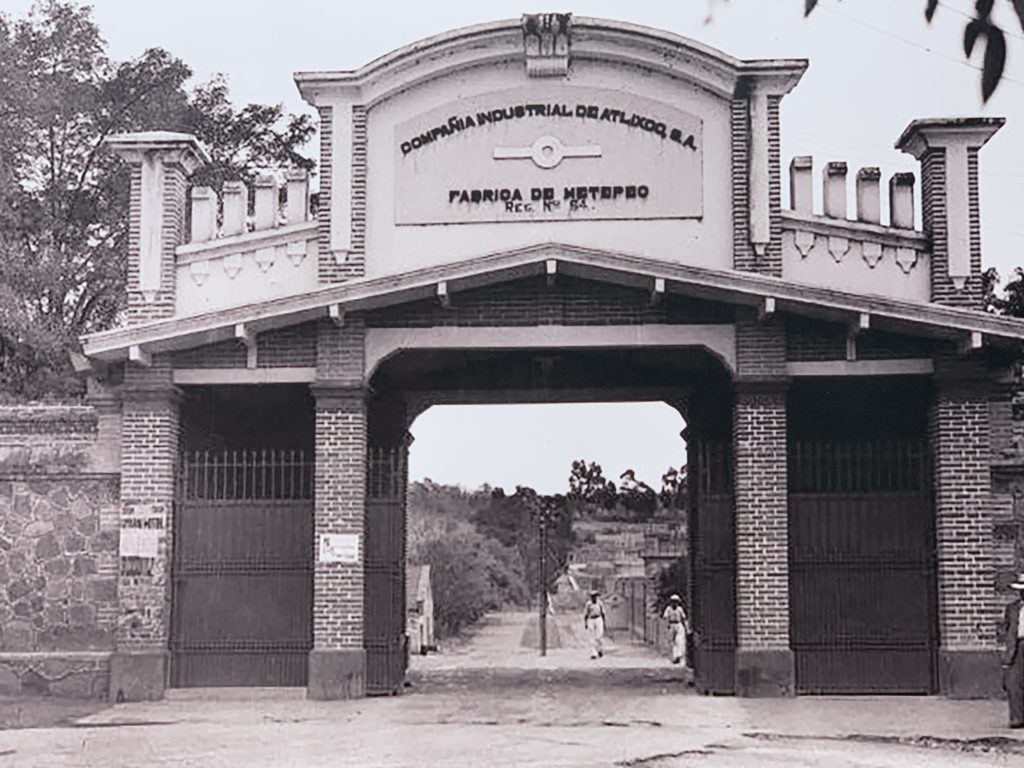
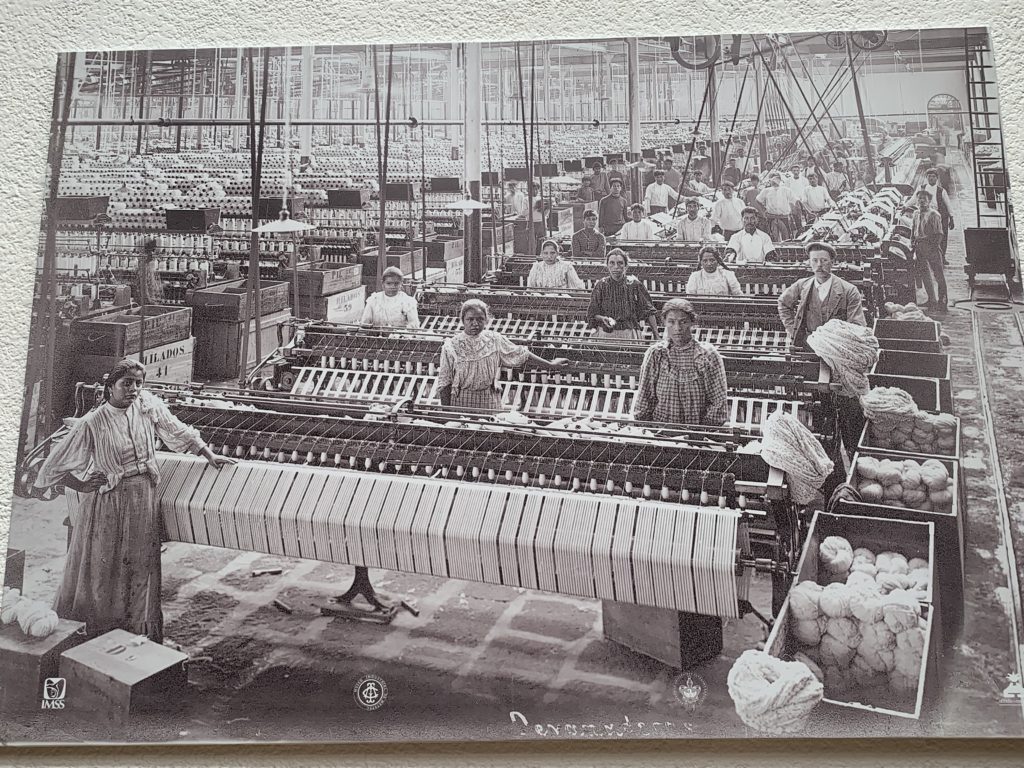
The factory/hotel grounds today.
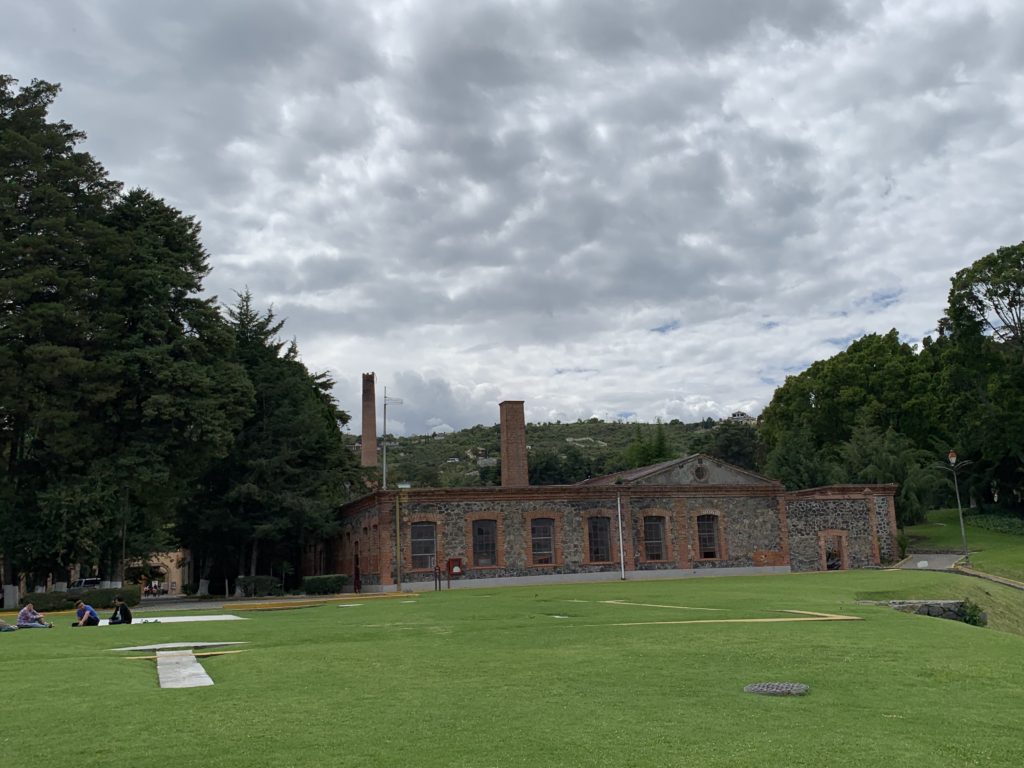
On the way back to Puebla, we stopped to walk around the Atlixco town square. Within five minutes, a deluge ensued. My housemate, Jacinda, and I found refuge in a coffee shop, where we sat dry and caffeinated till the storm passed. This beautiful view greeted us when we emerged.
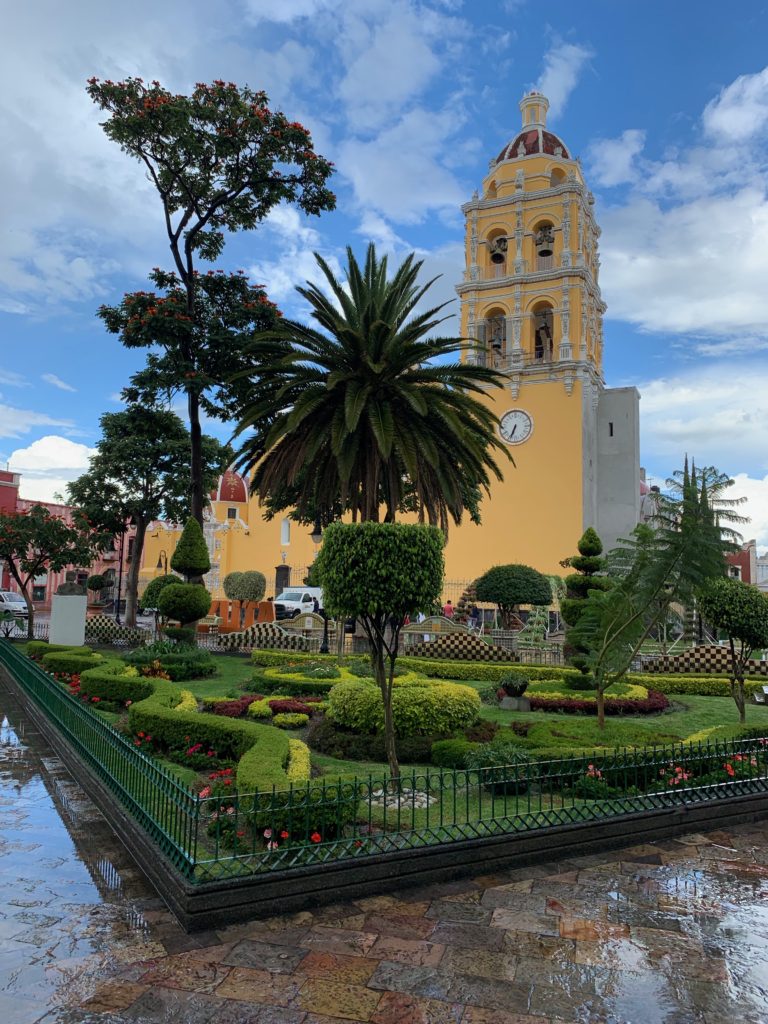
Cholula
Since landing in Mexico, I kept hearing about Cholula: When will you visit Cholula? Don’t miss Cholula while you’re here! Have you been to Cholula yet? I was too embarrassed to admit I had no idea what they were talking about. Bogged down by Spanish homework, I hadn’t taken the time to learn about where I was staying. When I finally took the time to google Cholula, I knew I wanted to spend my Saturday there.
I was a little nervous to go on my own, but it was my only weekend here, so I wanted one day to be a tourist. I called an uber, and the driver was a really nice young guy named Pablo. I told him right away that I needed to practice my Spanish, and so we did. He asked me lots of questions, and I think I did OK. We arranged for him to pick me up at 2 p.m.
I arrived at Cholula at 8:30 a.m., and it was so quiet and peaceful. I walked up the hill to La Iglesia de los Remedios. (The “hill” is actually the city’s famous pyramid.)
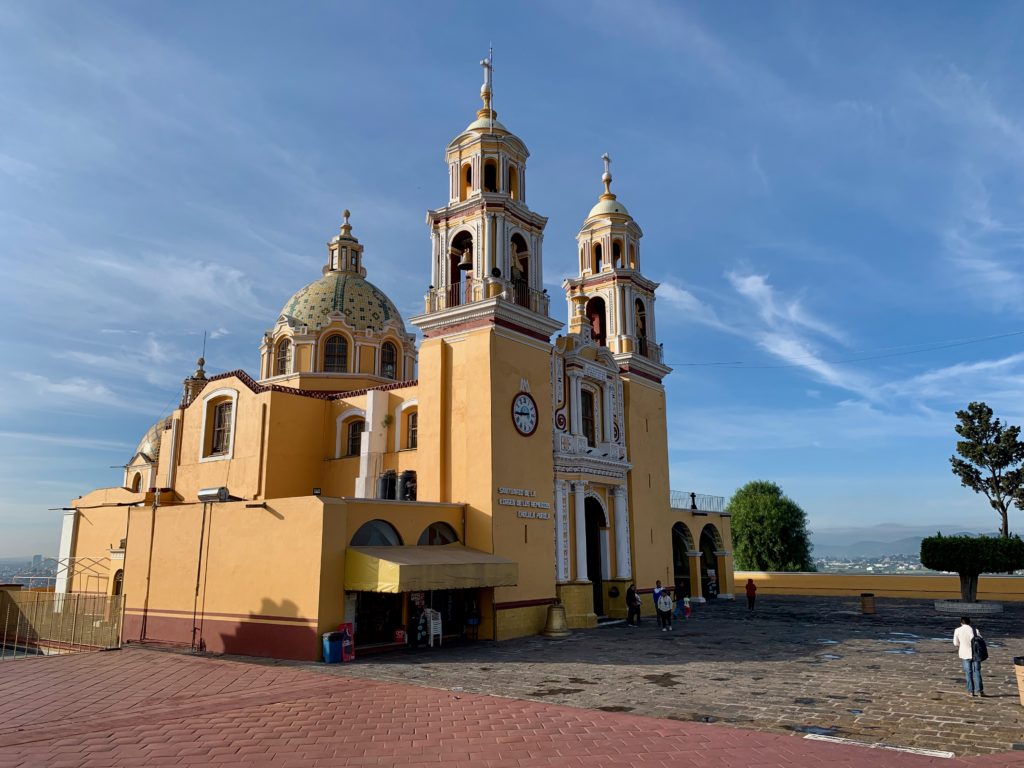
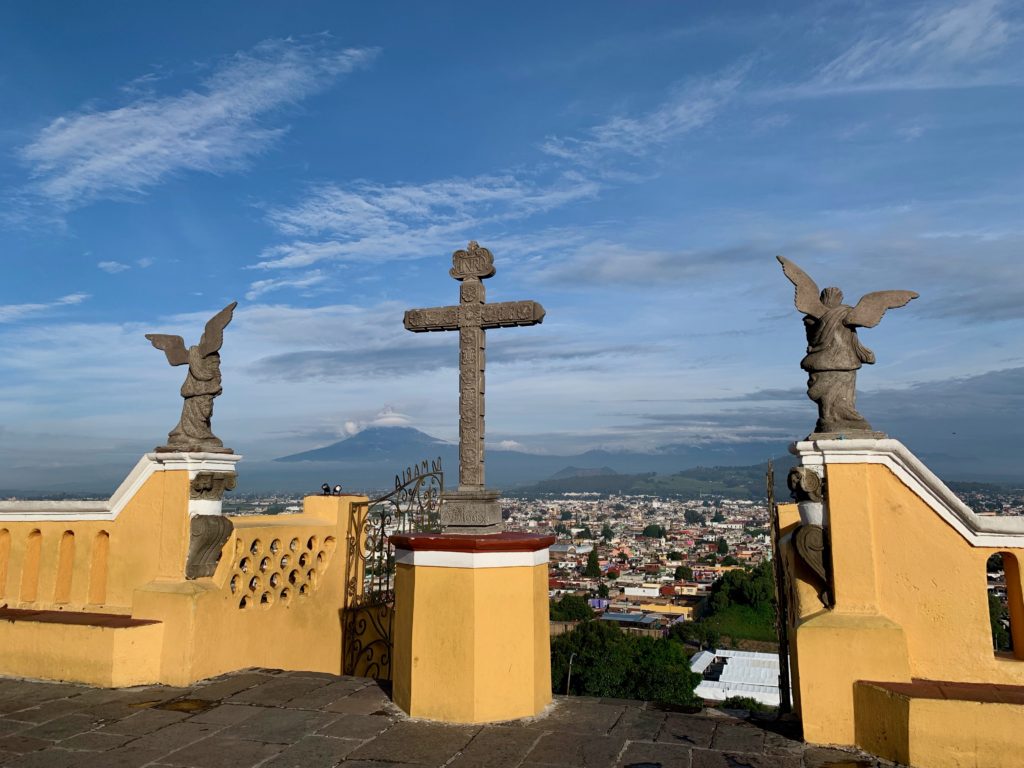
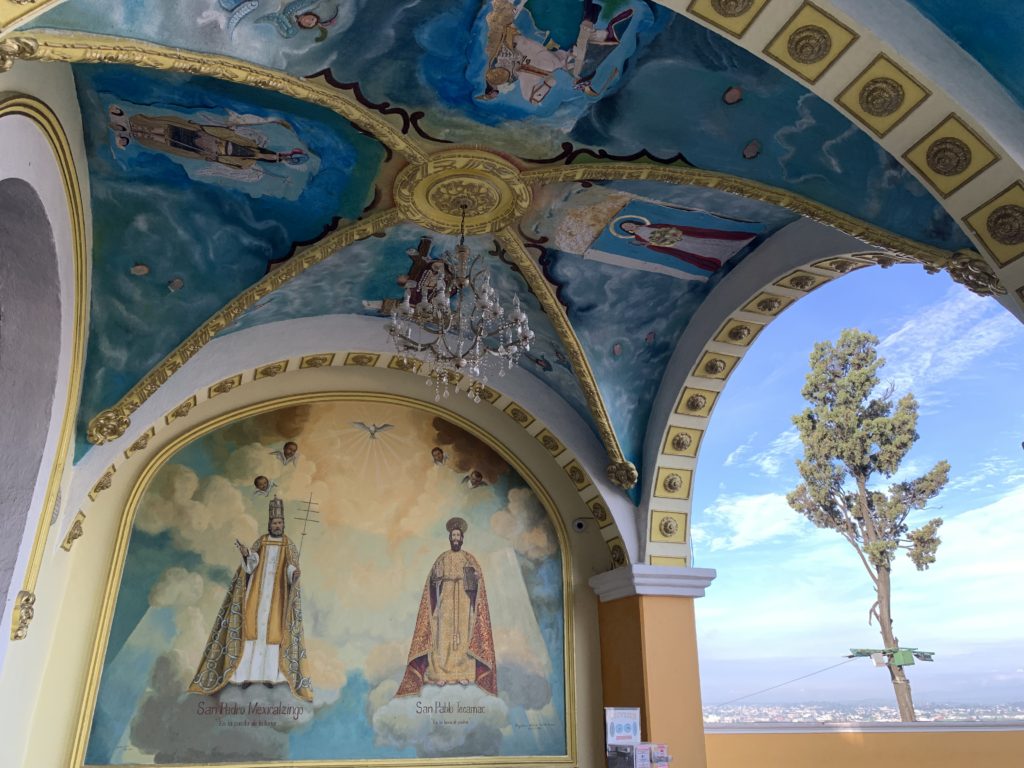
Back at street level, nothing was open yet, but I loved all the colors of the buildings and the fresh air. I paused to snap a few pictures of the volcanos, and then I wandered aimlessly through the quiet town. The two volcanos, Popocatépetl and Iztaccíhuatl, are also characters in an Aztec legend. You can read all about it on the Ancient Origins website.
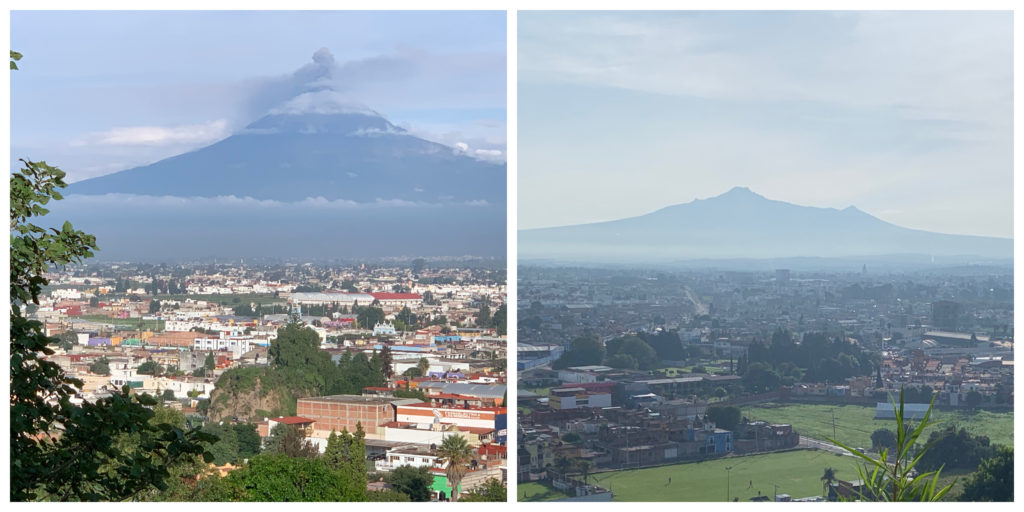
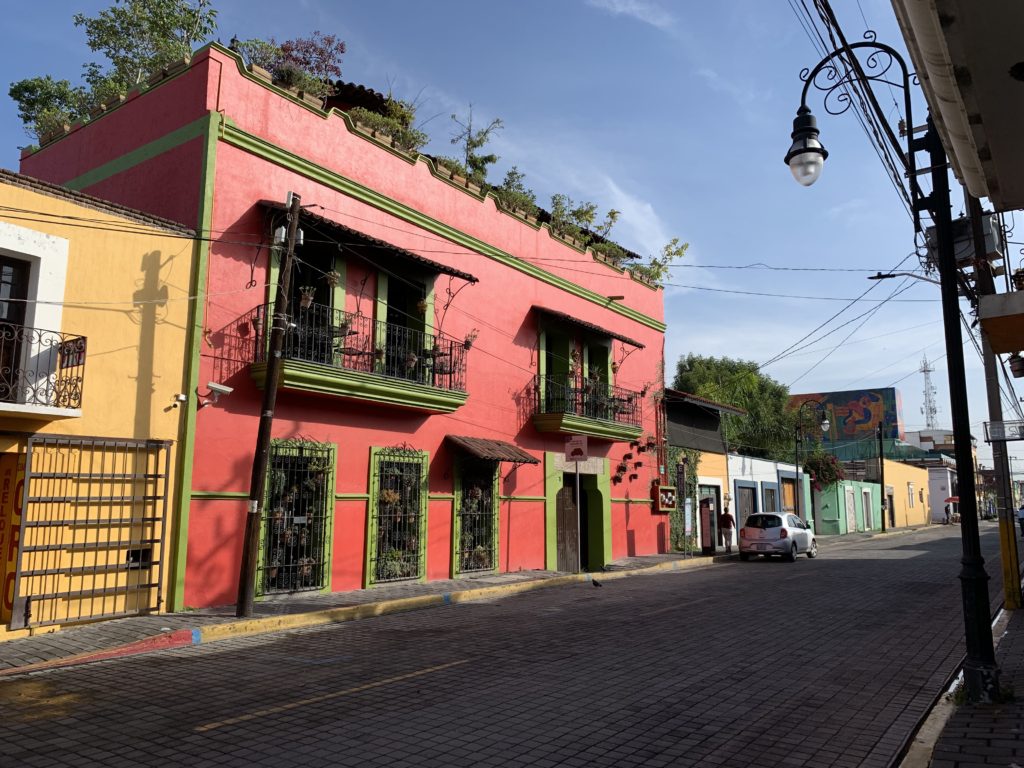
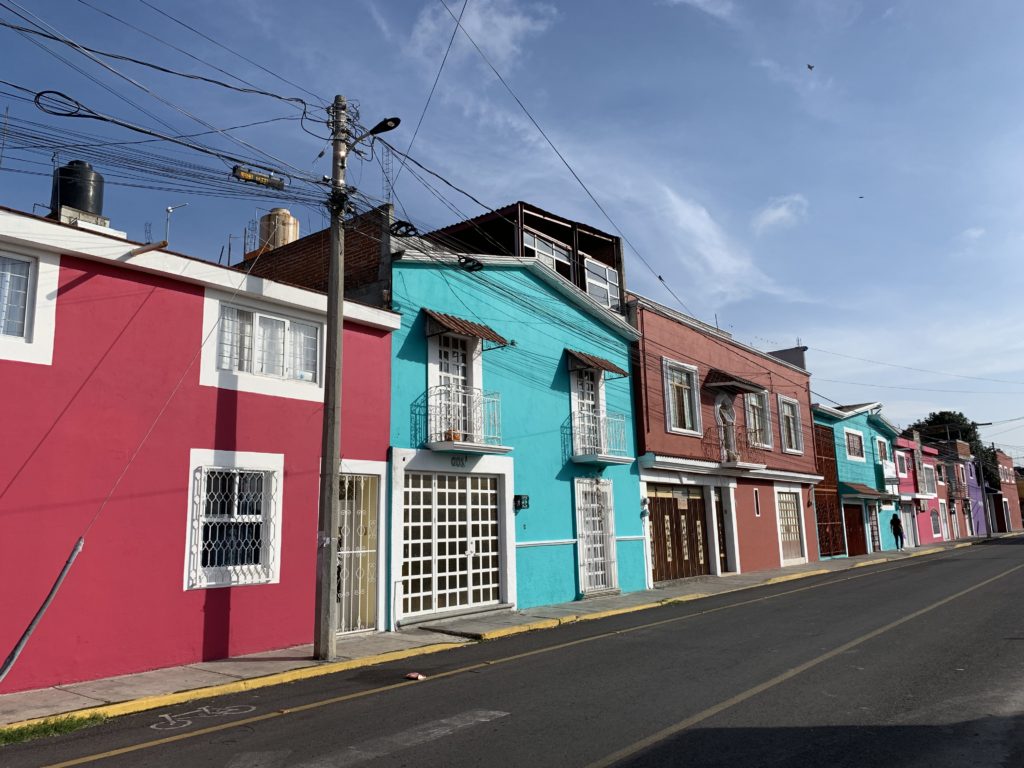
Eventually I returned to the 2,000-year-old Pyramide Tepanapa, the world’s largest man-made pyramid by volume, even bigger than those in Egypt! According to the Atlas Obscura website:
Stylistically, the pyramid is an oddity, puzzling archeologists to this day by incorporating architectural elements of both the Teotihuacan and El Tajin civilizations.
During the many pre-Columbian power shifts in Mexico, the pyramid itself fell out of use in favor of other structures, such as one of the many sacrificial altars on the ten-acre site. It is unclear whether it was through disuse that the pyramid became overgrown with shrubbery, or if, when the Aztecs caught wind of the impending Spanish arrival, the Cholulans literally buried the pyramid in a last-ditch, communal effort to preserve the massive temple, an important piece of their culture.
Either way, when the Spanish arrived at Cholula in 1519, Cortes and his men were so occupied with the decimation of the indigenous people and their more conspicuous holy sites that they failed to recognize the pyramid as such, instead thinking it the perfect hill site for one of their countless new churches! Within the year, La Iglesia de los Remedios was constructed, where it remains to this day.
As the dirt began to fall away, the pyramid revealed itself to archeologists, who have excavated the pyramid’s stairways, platforms, altars, and over five miles of tunnels snaking through the structure’s innards.
It was mind-boggling to imagine the pre-hispanic people wandering on those same paths. You could see where the tunnels branched off and went down or up steep stairs.
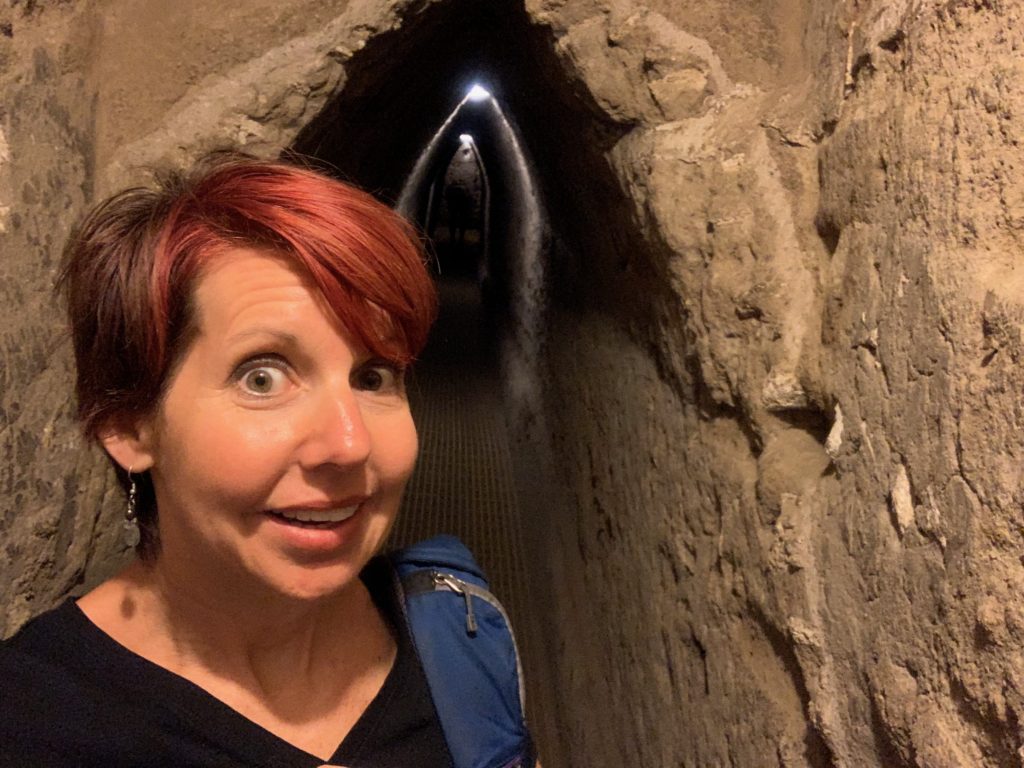
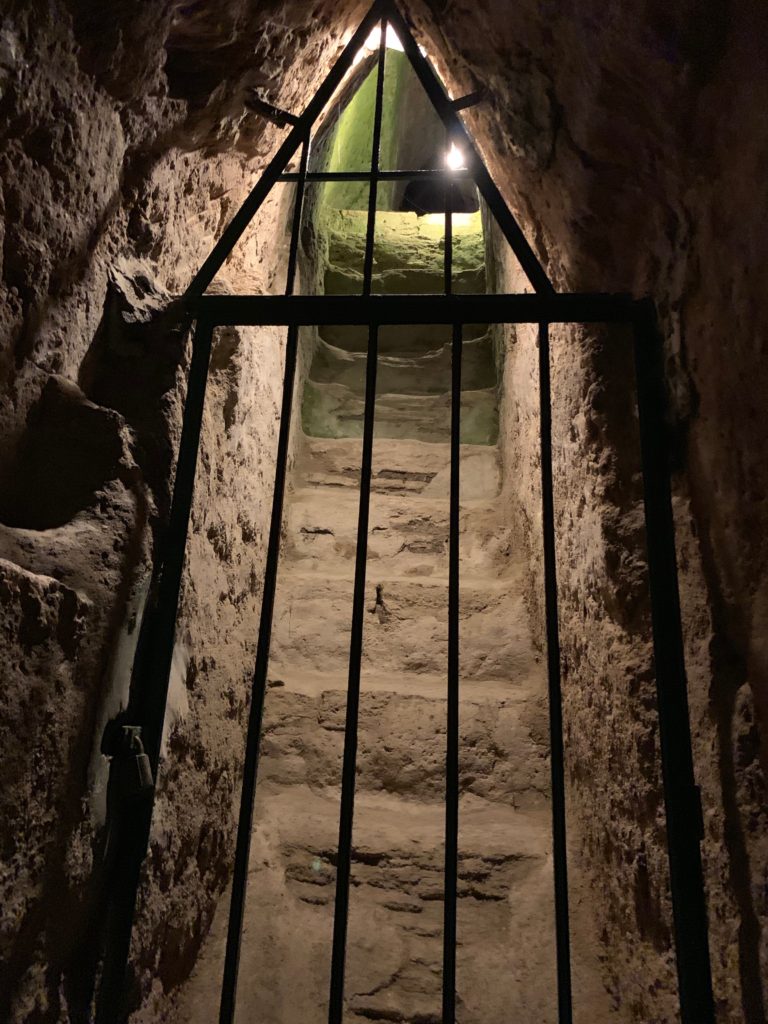
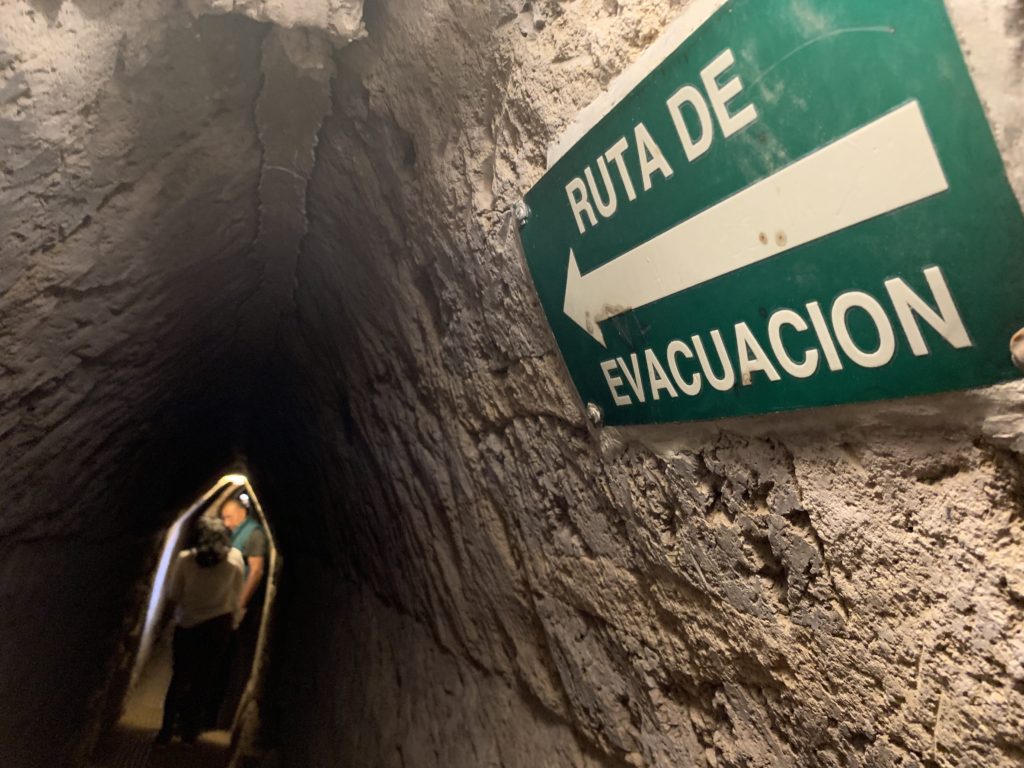
After exiting the pyramid, I continued on a path through the archaeological site. There was a place where they think the people made sacrifices of children to call for rain. Yikes.
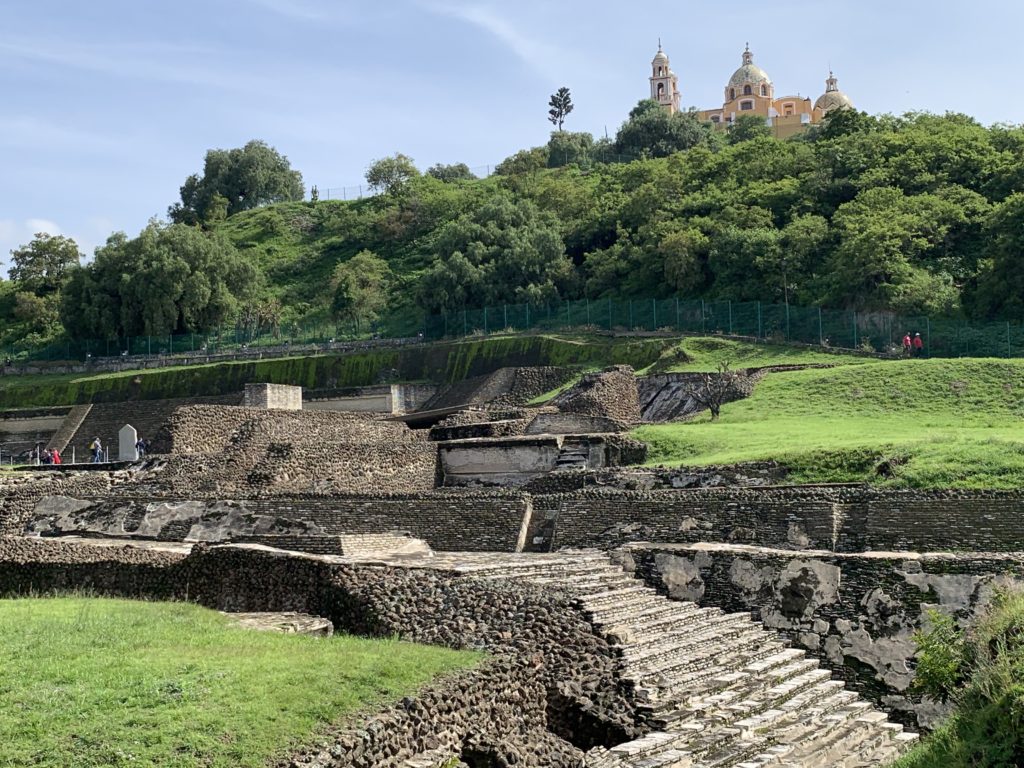
My papa poblano, Javier, said the whole city is built on top of archaeological sites. He said every hill is actually a pyramid. His wife, Anita, told me that one of her relatives was building a house in Cholula, and when they dug the foundation, they found small Aztec artifacts.
I popped in to the Convento de San Gabriel, a church and friary built in the 1500s.
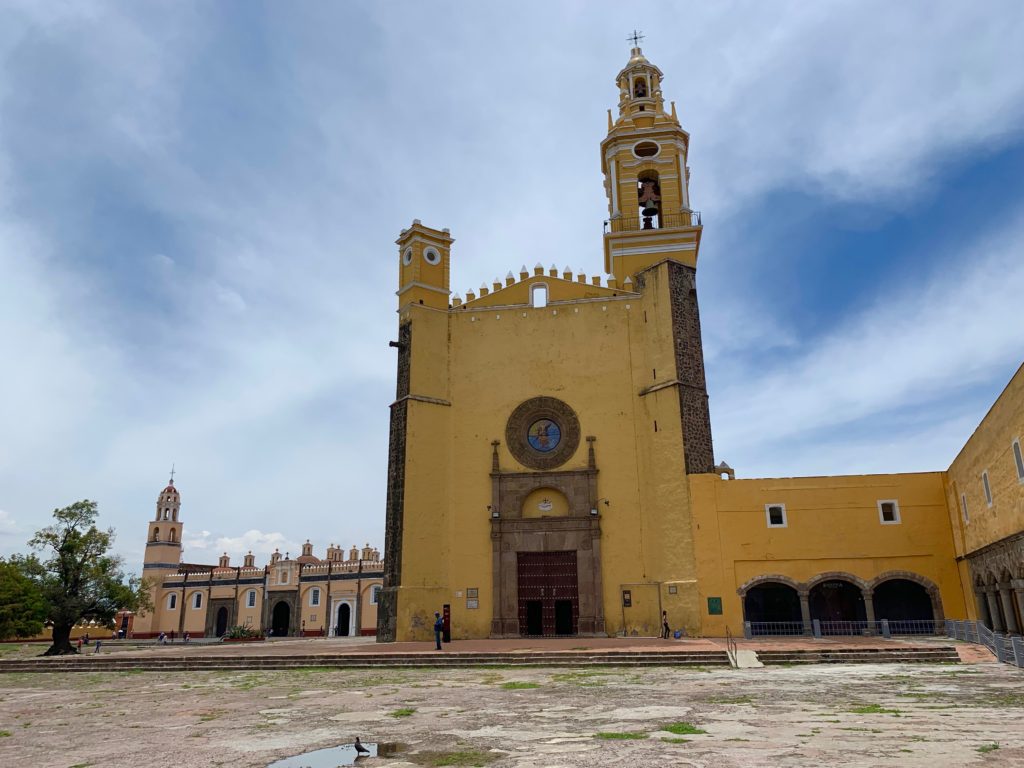
The Museo Regional de Cholula had a cool multi-media presentation about the two volcanoes, including a video about the legend. My favorite part, though were the art exhibits and one famous artist in particular, Jacobo Angeles. He creates crazy fantastical sculptures called alebrijes with wood and paper. Here are some of his pieces:
I checked out the Feria de Molotes, where about 100 vendors hawked molotes: fried dough with various fillings. I ordered two: one with mushrooms, and one with huitlacoche, which is a black fungus that grows on corn. Also known as corn smut – ha! – or Mexican truffles. I had no idea what I was eating, so I had to read about it later. I took my molotes out of the tent (it was super loud with a Mexican band performing) and sat just outside at a beer stand. I got a beer with a popote con tamarindo (a straw coated in a sugary tamarind mixture). It was quite yummy. While I sat at a shady table, I watched the Danza de los Voladores de Papantla. These performers erected a tall pole (30 meters?) and while one guy stayed up top playing music, the others hung from ropes and slowly descended as they rotated around the pole. The article linked above has lots of good info explaining the ritual.
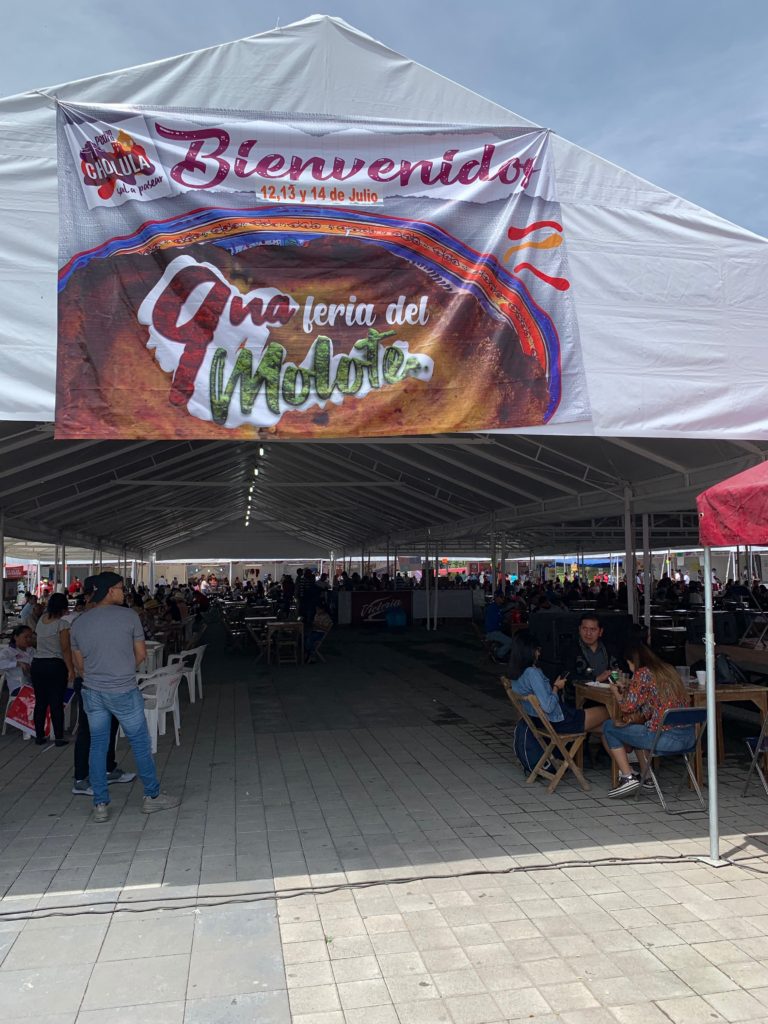
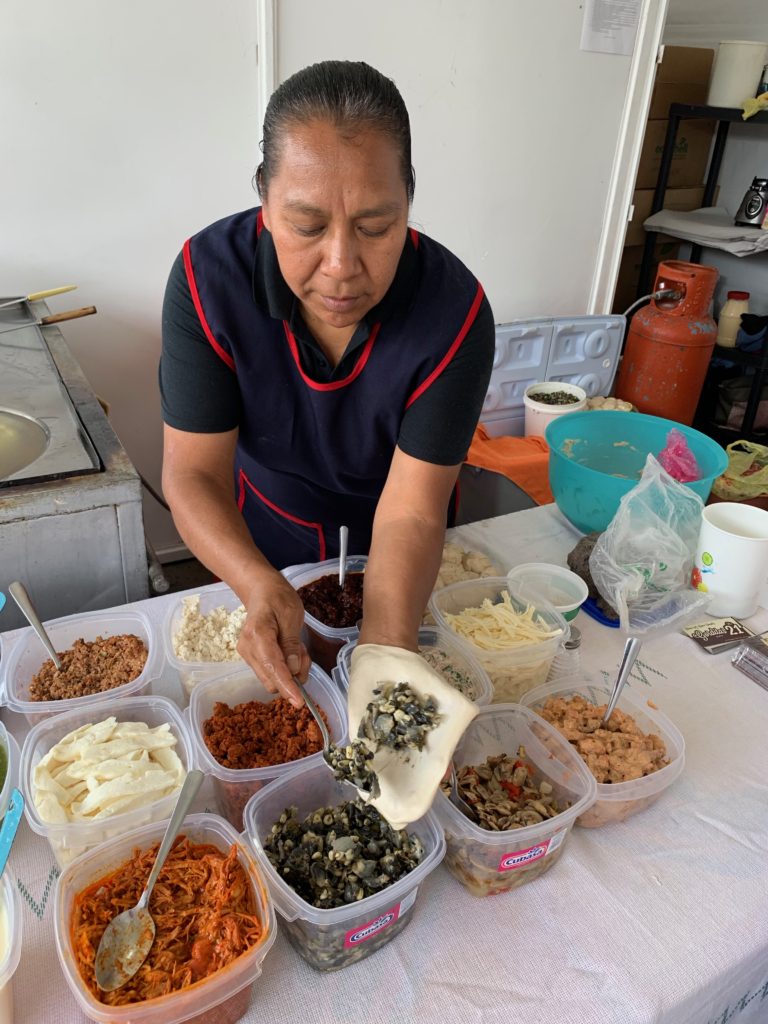
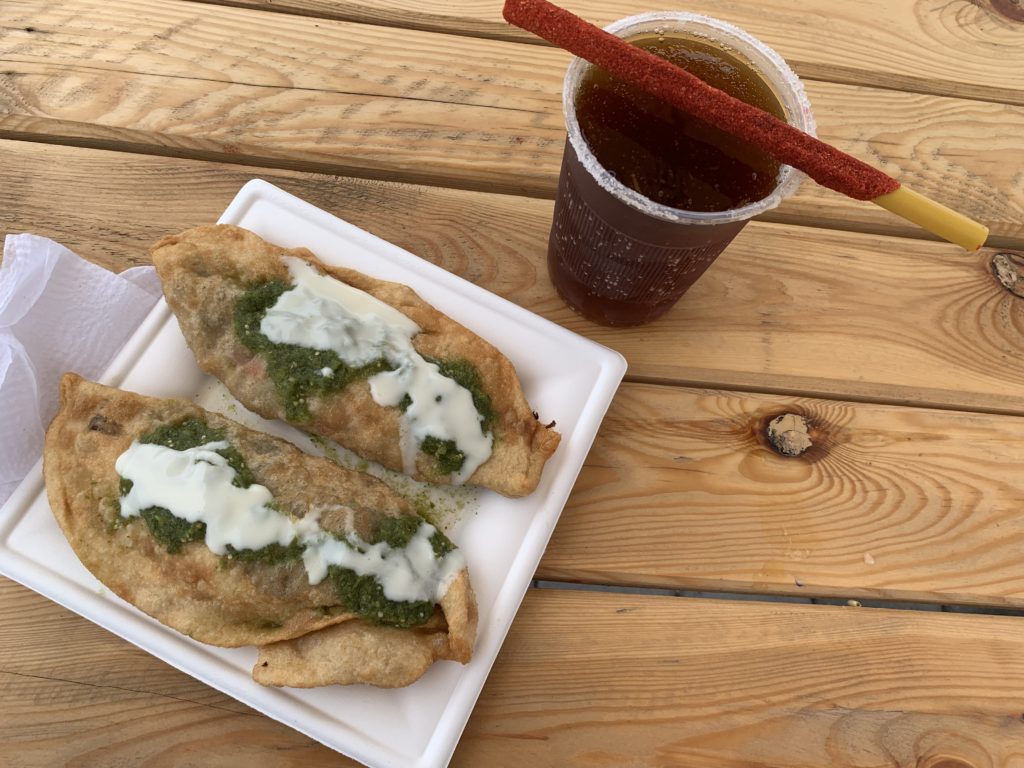
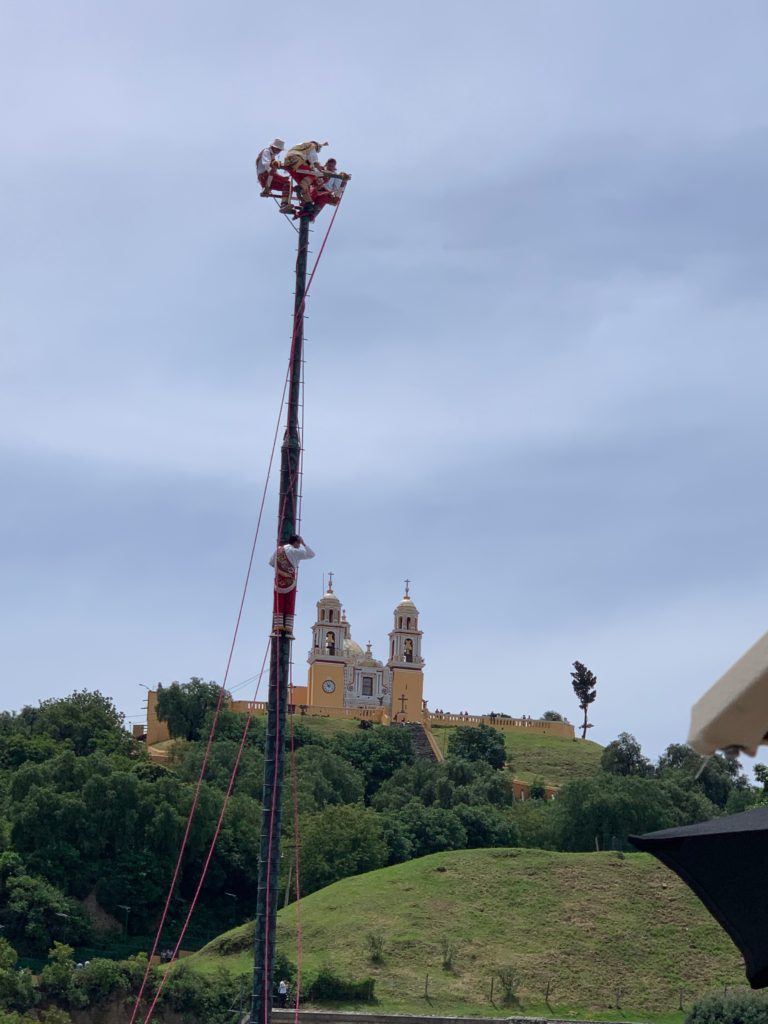
The town square featured all kinds of touristy attractions. One thing that was new to me: the jicaleto. It was a big piece of jicama shaped like a ping pong paddle. The vendor coated it with a lemony-chili mixture and then dipped it in whatever sugary flavor the customer requested.
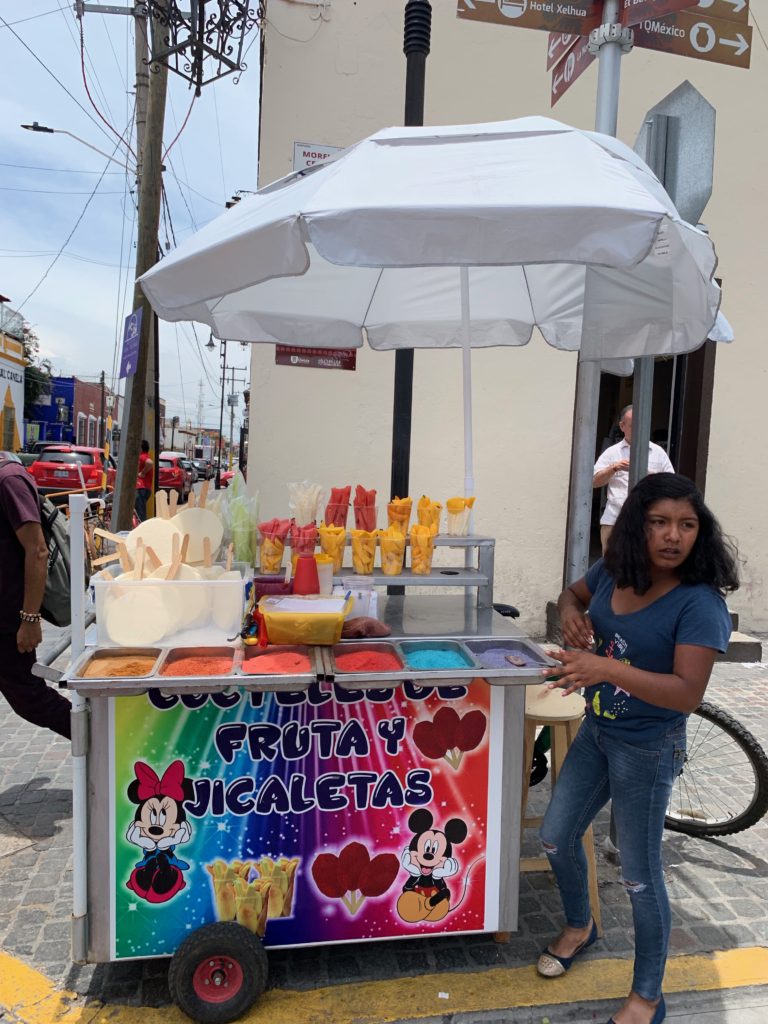
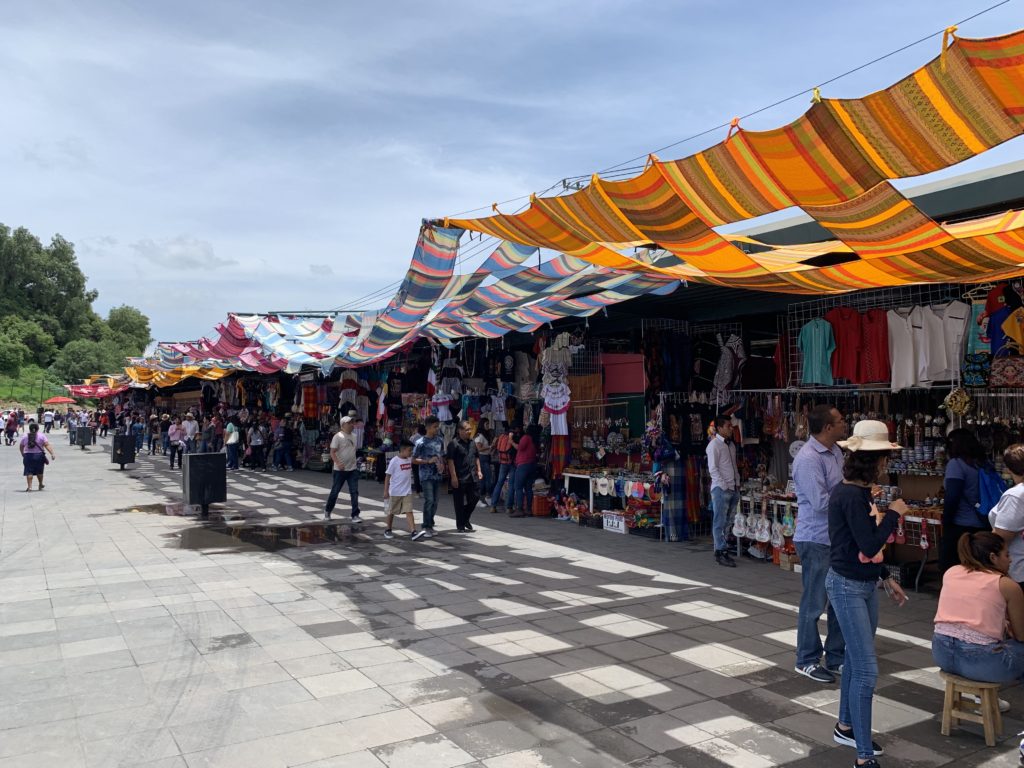
When Pablo dropped me off in the morning, I was afraid I would struggle to fill the hours before our designated meeting time at 2 p.m. In fact, I was having so much fun, I had to sprint through town to meet him on time. What a great day!
Walk in the Park
On another one of my favorite afternoons, I went for a walk after class. I visited the Parque Ecologico, where Anita walks every day. It was a beautiful park with lots of trees, a lake, many exercise options, picnic areas, playgrounds, a skatepark, a mini golf course, and aviary.
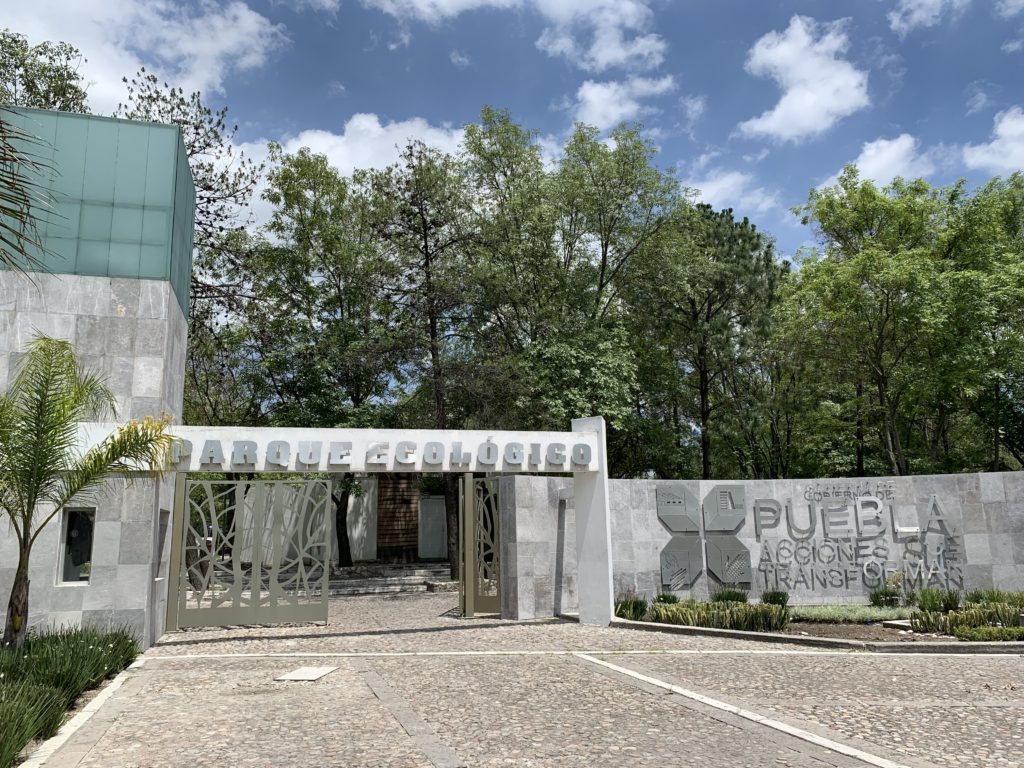
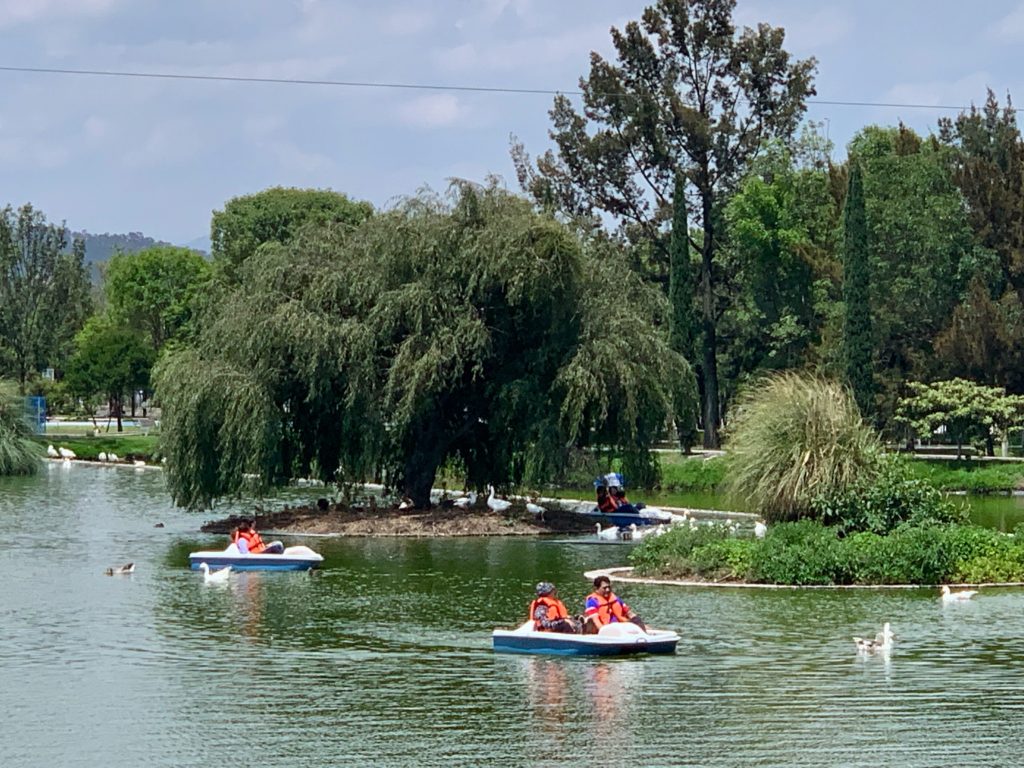
I walked through to the other side, and then exited the park to head back into town. I found a couple small markets, a flea market, and some nice jewelry stores, where I bought some nice talavera earrings.
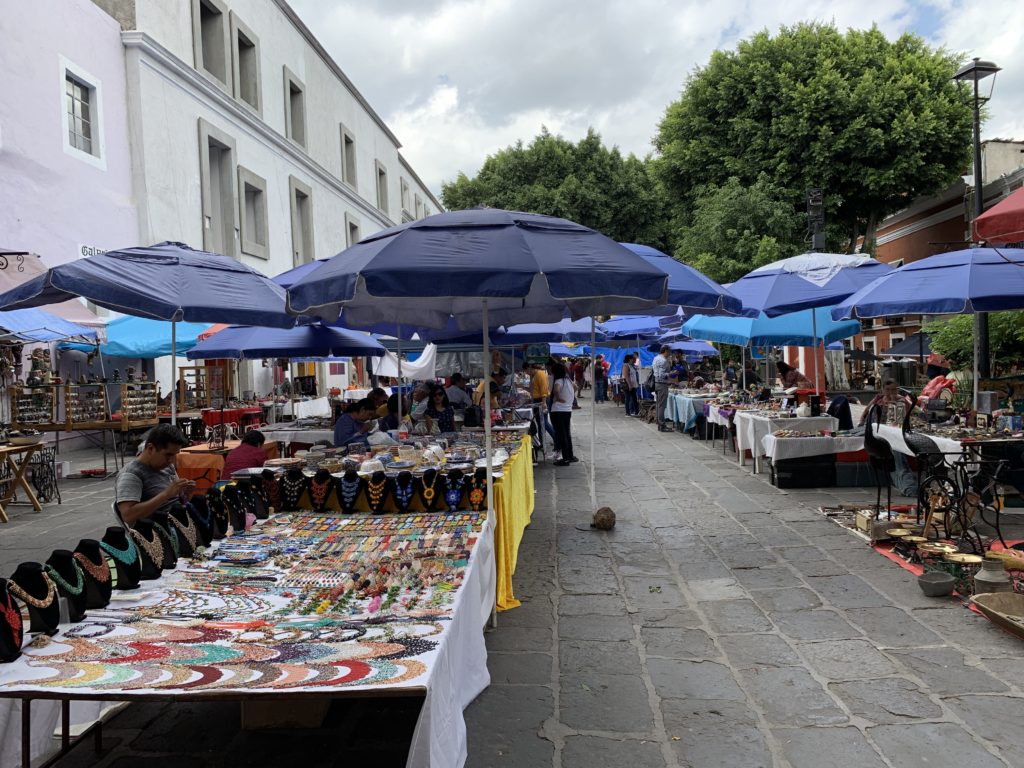
Then as I was walking back to the house, I realized there was some kind of fiesta going on at the park near our neighborhood. I crossed the big boulevard and found the second annual feria de cemitas. I bought some water and sat down to watch the Mexican band just as it was wrapping up. The crowd called for an encore, so they started up again with “La Bamba.” The band introduced some young guys who demonstrated a traditional dance. They started pulling women out of the audience to join them. I reluctantly agreed, and I did a pretty pathetic version of the Mexican dance, but my young partner was very sweet. His wee little brother played in the band. So cute!
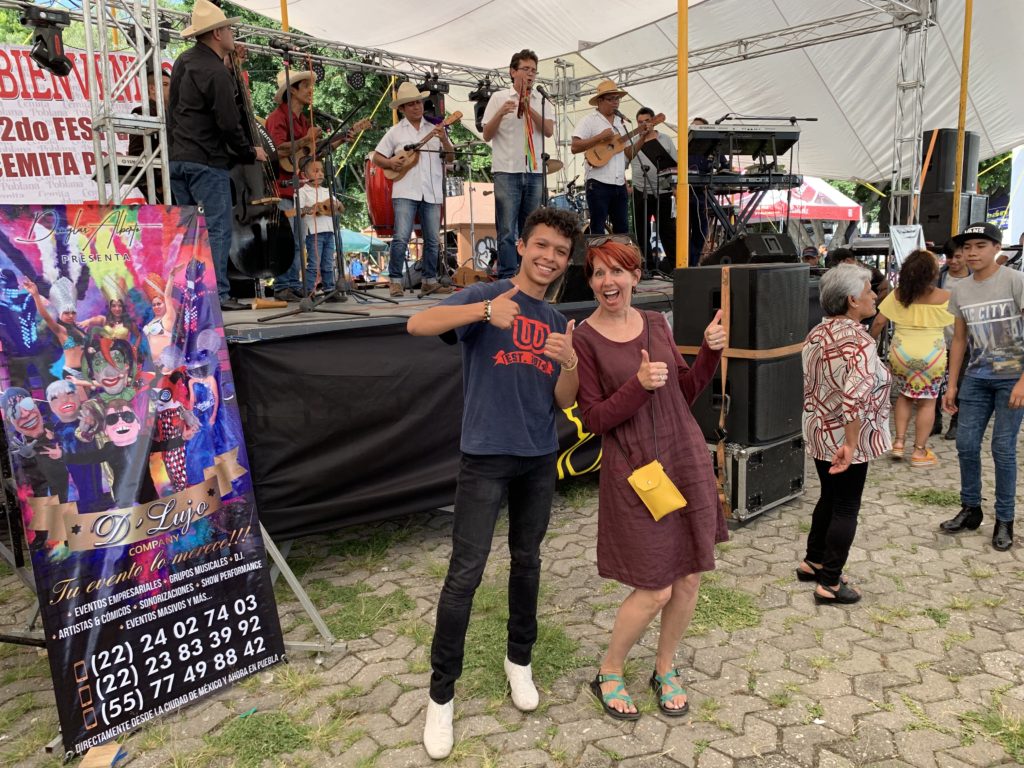
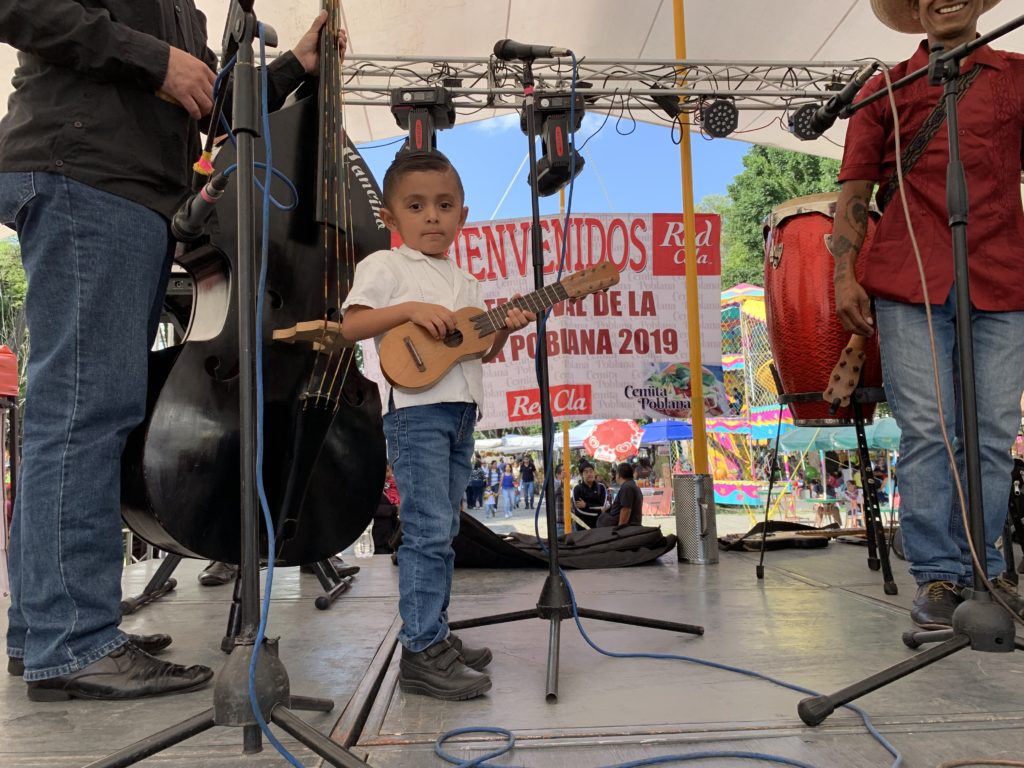
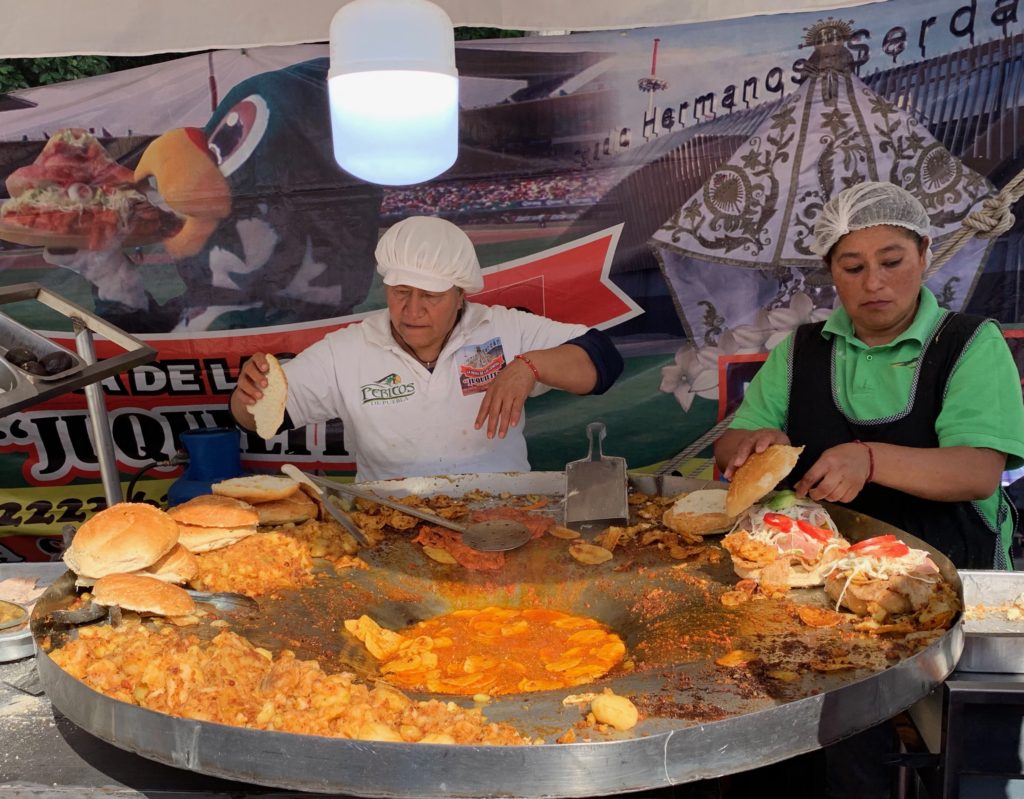
Mexico definitely stole my heart, and I am completely enamored with its language, art, music, dances, food, and bright colors. Can’t wait to go back!

